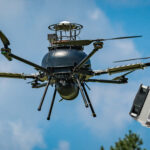Image:
Group Chairman of international aviation company, Sky One FZE, has said that Urban Air Mobility (UAM) will play a ‘transformative role’ in India’s transportation future.
Jaideep Mirchandani anticipates that with more precise policies, infrastructural development and innovation, UAM’s Indian trajectory will be unstoppable.
“Urban Air Mobility (UAM) is poised to be a transformative force in India’s transportation future. As a nation with bustling cities and increasing urbanisation, India faces significant challenges related to traffic congestion, pollution, and the need for efficient transportation solutions. Innovation is catching up to addressing these challenges actively and creating transportation systems as UAM holds the promise of addressing these challenges in a sustainable and innovative way. A recent report by BIS Research has stated that the UAM infrastructure market in India is poised for a $6.2 Million expansion by 2033, with a compound annual growth rate (CAGR) of 22.38 percent,” he said.
The electric vertical-takeoff-and-landing vehicles (eVOTL) aircraft used for UAM can navigate congested cityscapes, providing rapid point-to-point mobility.
Mirchandani said: “Imagine a future where passengers can travel seamlessly between cities and suburbs, avoiding gridlocked roads and reducing travel time significantly. Jaideep Mirchandani, the Group Chairman of the UAE-based aviation conglomerate Sky One FZE believes UAM will play a transformative role in India’s transportation future. He says “The basic concept of UAM revolves around meeting the demand for efficient travel by utilising airspace and Vertical Take-off and Landing (VTOL) capabilities to provide on-demand aerial transportation services. This efficiency is achieved by deploying electric aircraft (eVTOLs), flying taxis and highly automated crafts, which do not require an onboard pilot, to transport both passengers and cargo directly to their intended destinations.”
More data supports his view that UAM is on the upswing not just in India but globally. According to a study by Mordor Intelligence, the global urban air mobility market size is expected to grow from US$ 2.91 billion in 2023 to US$ 36.75 billion by 2035, at a CAGR of 23.54 percent.
“As India embarks on a greater number of Smart City and Global Industrial Finance and Trade (GIFT) City projects, along with various other urban initiatives, the demand for more specific point-to-point travel is expected to escalate even further in the future. I foresee India as a key player in this sector in another decade,” said Mirchandani.
“UAM aligns with India’s aspirations for cleaner, more sustainable transportation. Electric eVTOLs produce fewer emissions compared to traditional vehicles, contributing to reduced air pollution in urban areas. Moreover, these aircraft can potentially operate on renewable energy sources, further reducing their carbon footprint.
eVTOL aircrafts and flying taxis
A very positive sign is the fertile ground for innovation in the field, as many Indian companies are already actively engaged in the development of eVTOL aircrafts and flying taxis. Indian cities such as Mumbai, Bangalore, Chennai, and Hyderabad are emerging as potential hubs for the initial development of UAM infrastructure in India, which are also the most likely cities where the technology will be perfected and finally used.”
Mirchandani, however, believes that for the seamless integration of UAM into the country’s existing airspace management system, alongside traditional aircraft and helicopters, there is a need to incorporate more standardised protocols and establish a proper regulatory framework. “We need to fully understand new infrastructural requirements as UAM will require dedicated spaces for operations, for charging and refuelling stations, MRO facilities, and docking.
“The successful integration of UAM into India’s transportation ecosystem hinges on various factors. Regulatory frameworks need to be developed and adapted to ensure safety and efficiency. Infrastructure for vertiports and charging stations must be established. Public awareness and acceptance of this new mode of transportation also play a crucial role. Safety and environmental protocols also need to be systematised,” he said. “ This will of course require a collaborative synergy between authorities, urban planners and aviation entities.”
US based Archer Aviation plans to make 250 battery-electric air taxis in 2025 and India may soon see a similar surge in aviation innovation.
“With more precise regulatory policies and a sharp focus on infrastructure development and innovation, UAM’s development in India will be unstoppable, concluded Mirchandani.
Subscribe to the FINN weekly newsletter
You may also be interested in:

